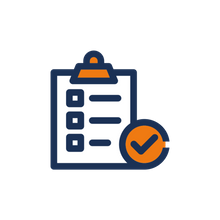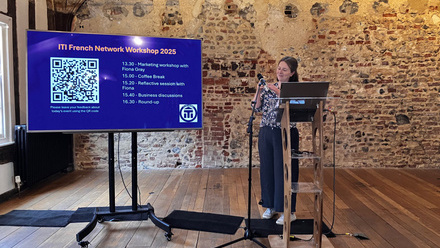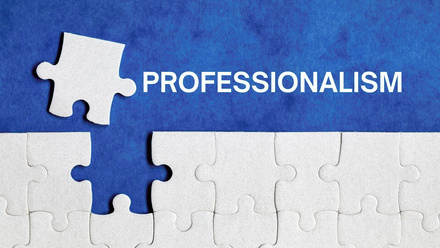CPD conversation: Subject knowledge
The first in a series of articles explaining more about the different categories your CPD might fit into. We start by investigating ‘subject knowledge’.
The CPD logging tool on the ITI website has eight different categories, and it’s not always straightforward to know which one you should choose. In order to help you log your CPD properly, we’ve talked to a range of translators and interpreters at different stages of their careers, as well as some Corporate members, about how they understand the different categories – and which elements of their own CPD they’d fit into each one.
We kick off the series with a closer look at ‘subject knowledge’ skills. Interpreter Kirsty Heimerl-Moggan, translator Kari Koonin, and Corporate member Louise Killeen of LK Translations explain how they see this category, and the subject knowledge CPD they carry out themselves.
What do you understand subject knowledge skills to be?
Kirsty: Not the practical interpreting skills (such as simultaneous and consecutive), but the client’s area of expertise. It’s also the part of my work that needs most preparation before each job.
Kari: Everything to do with my specialist field of horticulture, from greenhouse terminology to the latest industry news. And that also means in-depth knowledge of the theory, processes and techniques underpinning your subject, so you don’t have to keep looking them up.
Louise: Specialist knowledge of and expertise in the areas in which you tell your clients you work – areas in which you actively seek work and can demonstrate skills, knowledge and expertise. You need to be familiar with the specific categories and terms used in your fields.
What types of subject knowledge CPD do you carry out most regularly yourself?
Kirsty: I read company websites to check for company locations, names of the products the company sells, the names of senior staff, and other important current and historical information – for instance, mergers and acquisitions – which will help me get to know them better before I interpret for them.
Kari: I read trade journals and e-newsletters from clients and horticultural organisations in my target language, English. Trade journals and e-newsletters are an excellent resource for getting to grips with the terminology and type of language your clients use. Whenever I find a useful article via an e-newsletter I pin it and tag it so that I can find it again when that subject arises.
Louise: I look into the latest developments in relevant fields, visit trade fairs, and attend events that our customers are hosting as well as paid webinars and workshops facilitated by reputable providers. Much of our research involves parallel texts in our target language (English). Also, importantly, we work hard to develop collaborative relationships with end customers so that we can ask questions and draw on their expertise.
What is the most unusual CPD activity you have undertaken in this field?
Kirsty: Probably the most unusual activity is some training I undertook to help with my health and safety interpreting work. It was aimed at people specialising in maintenance work for kilns used in producing building materials. I did this for two reasons: to get the certification to show the client I am experienced as an interpreter in this field; and to actually help me with the terminology and – even more – to help me gain a better understanding of the subject matter at hand. I can’t interpret what I don’t understand.
Kari: I studied part-time for a diploma in horticulture from 2015 to 2020. It taught me so much about the theory behind the processes that come up constantly in my translation work (and also refreshed my memory of Biology GCSE). It also included a practical module on using professional mowers and hedge trimmers!
Louise: One of our biggest customers manufactures white goods, so trips to electrical retailers are always useful to see products in situ. We also attended and took part in a cookery class hosted by a customer to get to know a particular range of ovens, hobs and warming drawers. Another client manufactures sanitaryware that is often installed in public venues!
What are your top tips and suggestions?
Kirsty: Make sure you don’t overbook yourself. Two interpreting assignments, especially in a virtual world, might fit very nicely into a day, but you will have to make sure you have the knowledge you need to deal with these jobs properly, and this takes time. You need the background knowledge which will take you a while to build up, along with the specific terminology in both languages that you need on the day. In addition, we often forget to allocate time to the ongoing CPD for ‘as and when a job comes along’.
Kari: Aim to be able to have a conversation with your clients or potential clients about their industry at their level. A tip I was given by a senior translator in another field was that you should be aiming for undergraduate-level knowledge: check out university reading lists in your specialist field and learn from those textbooks. And subscribe to trade journals: they are all tax-deductible and it counts as CPD.
Louise: We all say we’re brilliant at what we do – who wouldn’t! – but if you say you specialise in a particular subject, you have to provide evidence to support that claim. Many of our non- disclosure agreements with customers have confidentiality clauses which prevent us from ‘naming names’ as a way of providing references, so a CPD record provides a great alternative. Know what you don’t know so you don’t take on work you’re not capable of handling because you don’t have the specialist knowledge; but equally, if there’s a subject you have an active interest in, investigate its potential for development.
Make a conscious effort to set aside time for subject-specific CPD at regular intervals. Our in-house translators are allocated two hours per month for self-directed or informal subject knowledge research in addition to more formal training undertaken in the form of webinars and workshops delivered by external providers.
Finally, don’t think about it as lost time because you’re not driving revenue; consider it as an investment that will enable you to secure future revenue – and achieve professional success.

Remember to log your CPD using the ITI logging tool. It is quick and easy to use and provides evidence to clients and agencies of your achievements.
When you achieve the annual target of 30 hours you will be awarded a certificate and logo to use on your website and other marketing materials. MITIs and FITIs will automatically have the logo added to their Directory profile.
Never miss another Bulletin article

If you would like to read more features and articles on a wide variety of subjects relating to all aspects of the translation and interpreting industry, subscribe to ITI Bulletin. Alternatively, join ITI and get a free subscription included in your membership.






